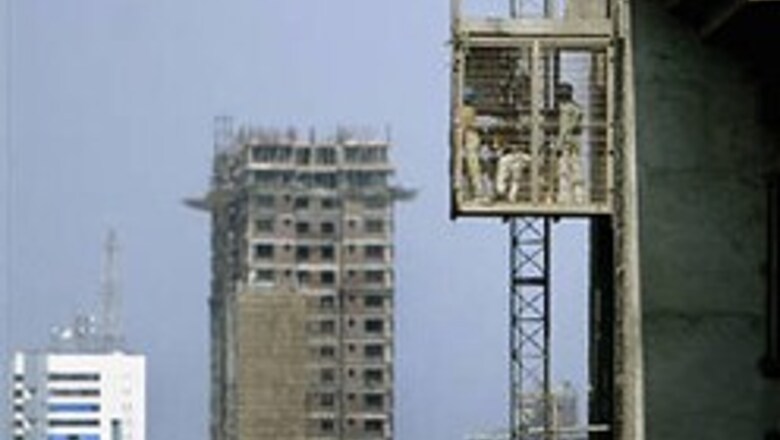
views
New Delhi: India's annual economic growth dipped below 9 per cent for the first time in three quarters in July-September as industrial output slowed, but analysts said the central bank's full-year forecast of 8.5 per cent should be met.
Data on Friday showed Asia's third-largest economy expanded 8.9 per cent in its fiscal second quarter from a year earlier, as higher interest rates and a strong rupee dragged on manufacturing and exports.
The figure was in line with a Reuters poll forecast of 8.8 per cent but below growth of 9.3 per cent in the previous quarter, and analysts said the economy was likely to clock 8.3-8.8 per cent expansion in the 2007/08 fiscal year to next March.
"We expect moderation to continue in the industrial sector based on higher interest rates and a possible decline in the equity markets," said Indranil Pan, chief economist at Kotak Mahindra Bank in Mumbai.
"Overall, we expect GDP growth for the full year at 8.7 per cent with services performing robustly." The stock market extended gains after the data to stand 1.8 per cent up on the day.
The rupee firmed to 39.63/64 per dollar and the yield on the benchmark 10-year bond held at 7.90 per cent.
India, the world's fastest-growing major economy after China, grew 9.4 per cent in the fiscal year that ended in March 2007, its strongest rate in 18 years, and the central bank expects expansion to slow to 8.5 per cent this fiscal year.
Growth has averaged 8.6 per cent a year in the past four years, which has attracted global investors' attention, fuelling a stock market boom and pushing firms to expand capacity.
Next Page: Services Strong, Farming Steady
PAGE_BREAK
Second quarter growth was driven by services, which grew at an annual pace of 10.2 per cent.
Farming, which accounts for nearly 18 per cent of GDP, expanded 3.6 per cent, just below the previous quarter's 3.8 per cent. Manufacturing, a big factor behind growth in the past four years, grew an annual 8.6 per cent in the quarter, slower than 11.9 per cent in April to June.
"The impact of rate tightening is now being felt and it will intensify. The appreciation of the rupee will also have some impact," said D.K. Joshi, principal economist at domestic rating agency Crisil in Mumbai.
The Reserve Bank of India, keen to cool the economy and price pressures, raised interest rates five times between mid-2006 and March this year but left them steady at its last review in October.
Many economists now expect the next move to be down. The central bank has also increased banks' reserve requirements by 250 basis points since December 2006 to slow credit growth and check inflation.
India's trade minister has said rupee appreciation of about 12 per cent this year is a problem for exporters and the central bank has intervened heavily to slow its rise.
Too Soon To Cut
Shuchita Mehta, an economist at Standard Chartered, said growth remained strong, suggesting latent price pressures even though headline inflation touched a five-year low last month.
"Higher oil and other commodity prices could add to the stress," she said. "We thus believe the time is not right now to cut interest rates."
Other data on Friday showed annual wholesale price inflation, India's most widely watched price measure, was 3.21 per cent in mid-November, up from 3.01 per cent earlier in the month.
Some analysts say a global credit crunch and high oil prices will also have the effect of moderating growth in the $1 trillion economy.
India imports 70 per cent of its oil needs. Even so, many expect the economy to expand at an average 7-8 per cent for the next few years because of private sector growth and spending by India's burgeoning middle class, which could provide a cushion against any global slowdown.
















Comments
0 comment